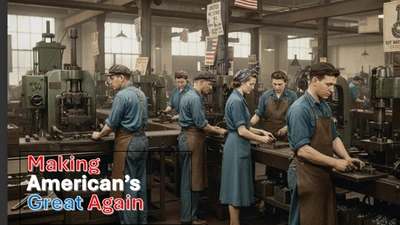Patriots, the President just activated a new round of tariffs aimed squarely at lumber, kitchen cabinets, vanities, and wood furniture. These tariff’s were specific. These industries, their manufacturers, were dumping huge quantities of products on the US market. These are not headline fluff—these are tariffs that touch housing, remodeling, and the real economy. Let’s break it down.
The Tariff Breakdown
- Lumber & Softwood Timber → 10% tariff effective immediately.
- Kitchen Cabinets & Bathroom Vanities → 25% tariff kicks in October 14, set to double to 50% on January 1, 2026.
- Wood Furniture & Upholstered Products → 25% now, climbing higher in 2026.
- Trade partners like the UK, EU, and Japan will get caps or lower rates under existing agreements.
This is being pushed under the Section 232 “national security” authority—a strong legal tool, but one that could still see challenges in court or the WTO.
Who Wins, Who Loses
Winners:
- Domestic cabinetmakers, mills, and wood product firms—if they can scale, they’ll capture share fast.
- U.S. lumber producers—already pricing in higher margins as imports face headwinds.
- Select regional manufacturers who can pivot quickly and win government contracts.
Losers:
- Import-heavy cabinet and furniture retailers—their supply chains just got more expensive, and they’ll either eat margins or pass costs on.
- Homebuilders and remodelers—higher input costs squeeze profits and cool demand.
- Consumers—new homes, remodels, and furniture all just went up in price.
Market Impact
- Housing Stocks: Homebuilders sold off today. Expect continued volatility as Wall Street recalibrates demand forecasts.
- Lumber Futures: Likely to spike as supply chains shift and U.S. demand stays firm.
- Inflation: Housing is a major inflation driver. These tariffs put upward pressure on both construction and renovation costs.
- Trade Flows: Importers will shift sourcing to “friendly” partners like the EU and Japan. Countries left out—like Canada, Mexico, and Vietnam—may push back with retaliation.
What This Means for Republican Investors
- Go Long: Domestic manufacturers and regional players positioned to absorb new demand. Watch for stocks in U.S.-based cabinetry, flooring, and lumber.
- Be Cautious: Homebuilders and import-heavy furniture chains will face margin compression. Avoid until we see how much pricing power they retain.
- Watch Inflation: Rising construction and renovation costs bleed into broader CPI numbers, meaning the Fed’s hand on rates remains firm.
Bottom Line
These tariffs aren’t just about cabinets—they’re about controlling supply chains, restoring production, and sending a message to trading partners. They strengthen domestic industry, but at a cost: higher prices for homes and renovations, tighter margins for builders, and more inflation pressure across the economy.
In other words: patriotic for producers, painful for consumers, and pivotal for investors. We also get better cabinets!










